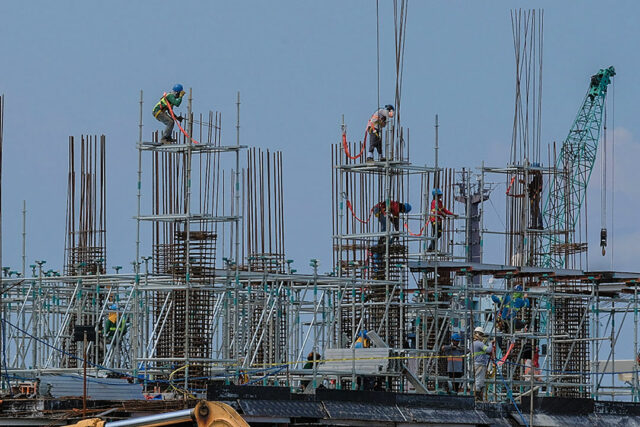CEOs worry over business viability

By Justine Irish D. Tabile, Reporter
OVER HALF of Philippine-based chief executive officers (CEOs) are concerned over the viability of their businesses in the next 10 years without reinvention, according to a report by PwC Philippines.
The Philippine report of PwC’s 27th Global CEO Survey showed that 54% of CEOs believe that their companies “will not be economically viable in the next decade if they continue on their current path.” This is lower than the Asia-Pacific average of 63%.
Asked about the long-term viability of their businesses, 46% of Philippine-based CEOs expressed concern, much higher than the 34% average in the Asia-Pacific region.
Conducted from October to November 2023, the survey covered 1,774 CEOs in the Asia-Pacific region, including 35 CEOs in the Philippines.
More than half or 57% of Philippine-based CEOs are optimistic that the global economy will improve over the next 12 months, higher than the Asia-Pacific average of 40%.
Around 77% of Philippine-based CEOs said the United States is the most important for their growth prospects, while 40% cited China.
“The Philippines has undertaken efforts to improve its investment climate and attract foreign direct investment. This sustained growth and the positive investment climate could have promoted optimism among CEOs regarding both local and global economies,” PwC Philippines Deals and Corporate Finance Managing Partner Mary Jade Roxas-Divinagracia said in a statement.
For the next 12 months, 40% of Philippine-based CEOs identified geopolitical conflict as a key threat, while 37% cited inflation. At least 29% of the CEOs said macroeconomic volatility and cyber risks are also main threats.
PwC Philippines Chairman and Senior Partner Roderick M. Danao said that there is growing impetus to reinvent among Philippine business leaders.
“Many of our country’s business leaders are now working on accelerating the transformation of their business models, investing in technology and their workforce, and managing the risks and opportunities related to climate change,” Mr. Danao said in a statement.
“In this era of continuous reinvention, CEOs have vast opportunities to reshape their organizations and themselves, to thrive on disruption, and to transform aspirations into realities,” he added.
According to the report, 97% of the Philippine respondents said that they have already taken steps to change “how they create, deliver, and capture value over the past five years.”
Meanwhile, 86% said that they at least took one action that largely impacted their company’s business models.
However, 71% of the Philippine CEOs cite the lack of workforce skills as a barrier to reinventing the business models of their companies.
The other top challenges cited by business leaders are the lack of technological capabilities (69%) and competing operational priorities (65%).
Michael L. Ricafort, chief economist of the Rizal Commercial Banking Corp., said that businesses will need to digitize and adopt the best technologies globally to drive growth.
“These will help grow their business by leaps and bounds, further boost productivity and output, and reduce costs,” Mr. Ricafort said in a Viber message.
Aside from making their businesses viable, he said digitization and the adoption of the latest technologies will also help improve businesses’ competitiveness.
Sought for comment, Union Bank of the Philippines, Inc. Chief Economist Ruben Carlo O. Asuncion said organizations that want to remain viable need to reinvent themselves by improving and adjusting to the current environment.
“Being relevant can ensure its existence and hopefully profitability and resilience,” he added.
AI IMPACT
According to PwC, CEOs are seeing generative artificial intelligence (GenAI) as a catalyst for reinvention “that will power efficiency, innovation, and transformational change.”
At least 60% of the CEOs in the Philippines are expecting GenAI to impact the workforce in the next three years, while 57% believe GenAI will positively impact revenue and profitability.
Mr. Danao said that they have been seeing “heightened interest” from business leaders in GenAI.
“Their enthusiasm over the opportunities for growth and innovation that GenAI brings demonstrates their understanding of the need for fundamental reinvention of their businesses,” he added.
However, 80% of the CEOs said that to be able to reap the “transformative benefits” of GenAI, there is a need to upskill the workforce.
Meanwhile, 69% of them are concerned about cybersecurity risks, while 57% are concerned about misinformation.

























